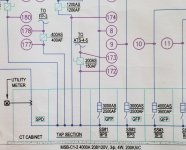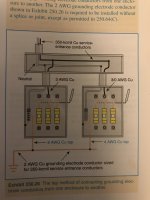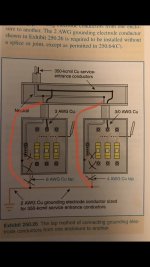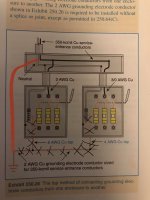Grouch
Senior Member
- Location
- New York, NY
I'm having trouble visualizing this section in the 2017 NEC: 250.64(D)(3); it describes connecting the GEC to a common location. My questions are as follows:
1) The GEC is connecting to the line side of the disconnecting means correct? It is NOT connecting to the grounded service conductor / neutral INSIDE the disconnecting means, but rather connecting to the GSC before it enters the disconnecting means?
2) What exactly do they mean by 'common location'? What if you have 2 disconnecting means, each one with a set of service entrance conductors tapping off an End Line box / demarcation point from the utility? where's the common location?
1) The GEC is connecting to the line side of the disconnecting means correct? It is NOT connecting to the grounded service conductor / neutral INSIDE the disconnecting means, but rather connecting to the GSC before it enters the disconnecting means?
2) What exactly do they mean by 'common location'? What if you have 2 disconnecting means, each one with a set of service entrance conductors tapping off an End Line box / demarcation point from the utility? where's the common location?




